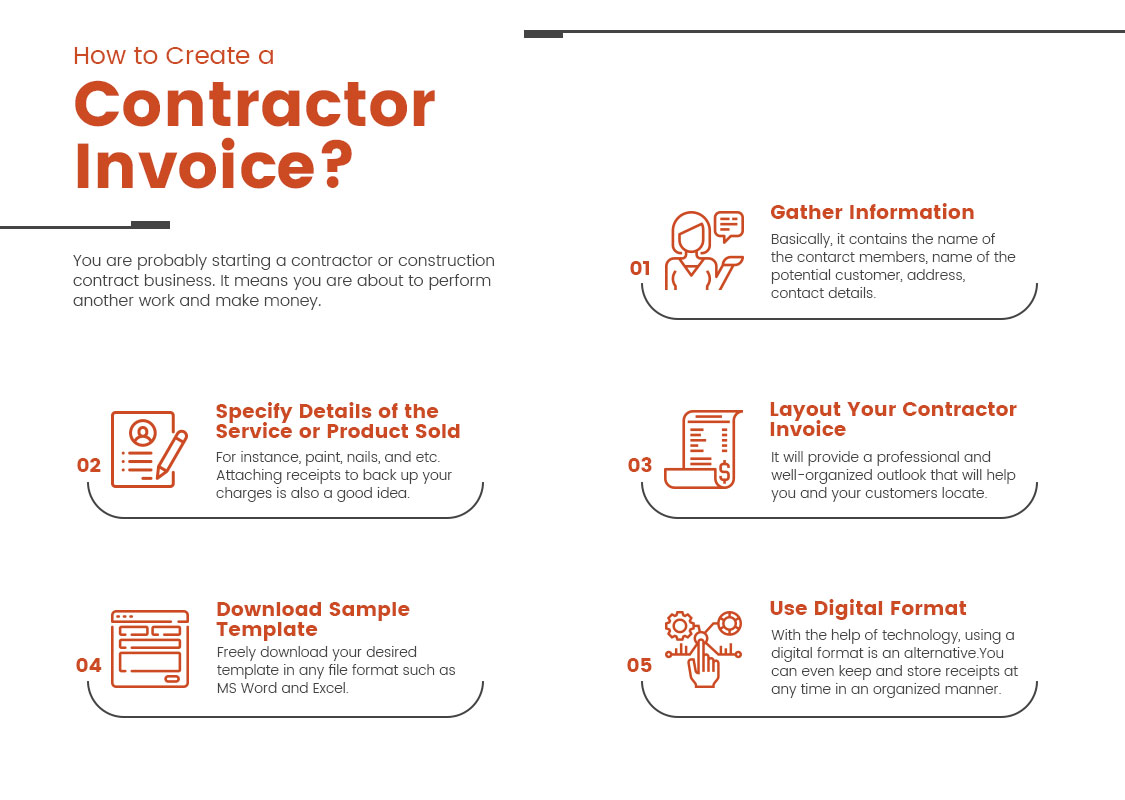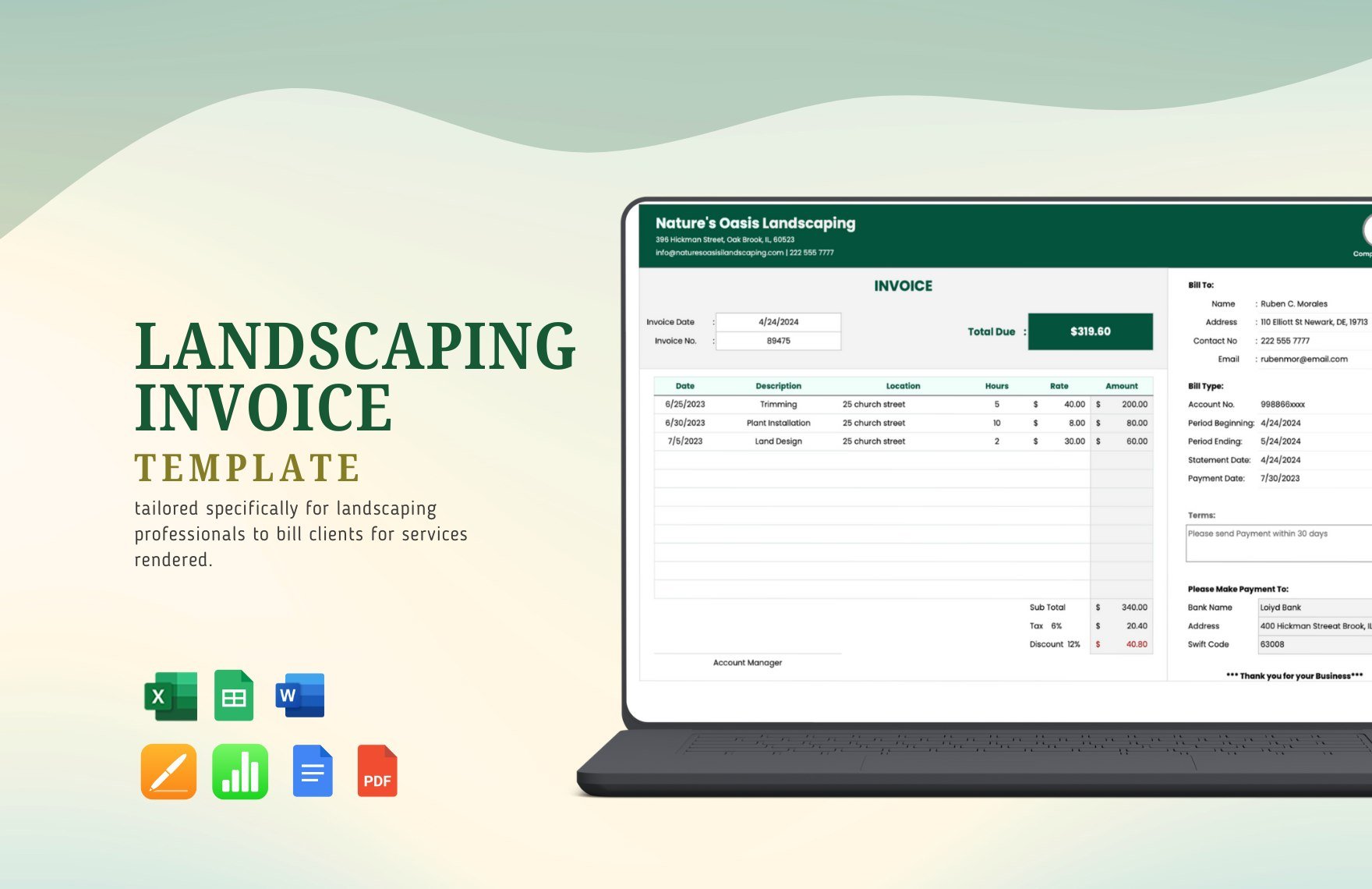In need of a contractor invoice for your business, but don't know how to craft effectively? We've got your back. We offer contractor invoice templates that will help you provide a well-organized bill to your potential customers. These invoice templates are 100% customizable, easily editable, and printable which will help you save your time. Make use of professionally written content and built-in layout. Just make some minor modifications that will truly fit your personal needs. What are you waiting for? Download them in any file format such as Google Docs, MS Word and Apple Pages, MS Excel, Numbers, Google Sheets anytime and anywhere at Template.net!
What is a Contractor Invoice?
A contractor invoice is a document that may be used by a person who does jobs for businesses or individuals. The jobs can be from small repairs to junk removal, gardening or landscaping, and even plumbing. Upon completion of the duties required, the contractor may specify the services and supplies then present the payment bill or they can choose to charge the customer for earlier payment, especially if the contractor sets a payment schedule.
An article on blog.invoicely.com reveals that there are reports that 63% of construction businesses are getting regular payment schedules. In some cases, they get an advance payment. However, the remaining 37% is being paid 30 days or later for completed projects.
Basic types of contractor invoices include independent contractor invoice, electrical contractor invoice, and contractor hourly invoice.
How to Create a Contractor Invoice?

You are probably starting a contractor or construction contract business. It means you are about to perform another work and make money. To achieve that, you need to show the bill to get paid. This short guide will present practical tips to help you create a contractor invoice.
1. Gather Information
First off, you have to collect the necessary information to be included on your contractor invoice. Basically, it contains the name of the contractors, name of the potential customer, address, contact details. invoice number, description of services, and goods including their price and quantity, additional fees, total amount, and terms or conditions for payment. Also, do not forget to indicate the invoice header. State that it is a contractor invoice.
2. Specify Details of the Service or Product Sold
In this part, you have to be meticulous and keen on placing the details of the service invoices and product invoices you offered. Be particular on the items you have listed.
Based on an article on invoice.2go.com, be specific rather than general with your line items list. Instead of listing "materials" as a single cost, list each on a row. For instance, paint, nails, plywood, and etc. Attaching receipts to back up your charges is also a good idea.
3. Layout Your Contractor Invoice
Layout all the elements in your contractor invoice appropriately. It will provide a professional and well-organized outlook that will help you and your customers locate important details.
According to an article on blog.invoicely.com, unprofessional-designed invoices tend to be confusing and irritating. Make sure your business logo, company name, address, and phone number are at the top of the invoice where you can find it easily. Then break down the invoice in an itemized format, showing exactly what the customer's paying for.
4. Download Sample Template
You can download a sample contract invoice template on various websites. For your convenience, this website is perfect for you. Freely download your desired template in any file format such as MS Word and Excel. Customize and edit some information to make it your own.
5. Use Digital Format
With the help of technology, using a digital format is an alternative. You can even keep and store receipts at any time in an organized manner. Using a digital format is one technique to make sure your accounting invoice is proficient, and to indicate that you’re likely to use the latest tools and follow best practices.

